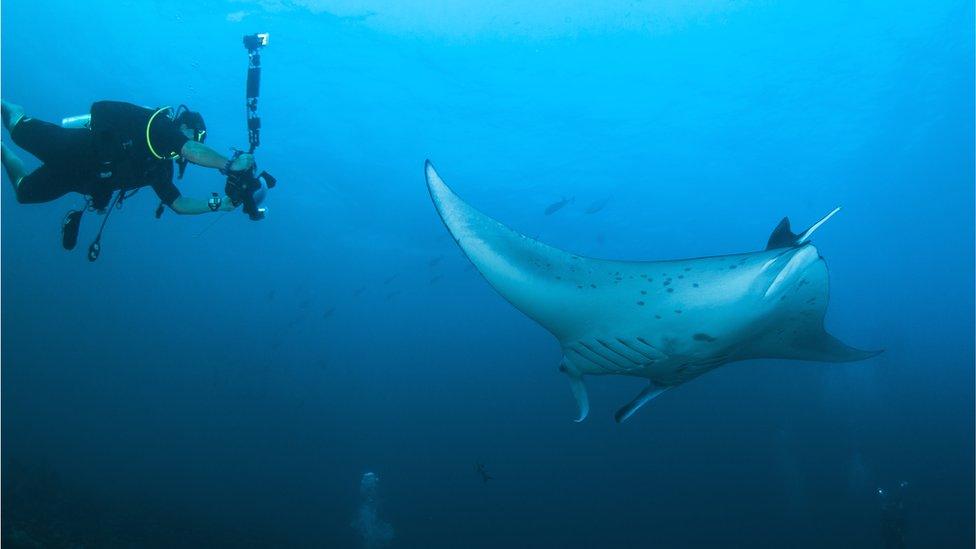'Predator of the deep' or gentle giant?
- Published

Giant manta rays can be identified by their spots and blotches
Scientists say the giant manta ray, known as a gentle leviathan, is in fact a "predator of the deep" preying on fish and other animals.
The ray, which can grow up to 7m (23ft) across, was thought to feed on tiny floating animals at the surface.
New evidence shows much of the ray's diet is made up of food from the deep.
The finding raises questions about the future of the giant manta ray, which is listed as a vulnerable species, external.
According to the International Union for Conservation of Nature, the fish is likely to become endangered unless its survival chances improve.
Giant manta rays are known to feed on zooplankton drifting on the ocean surface, but a new study suggests the animals could also be getting their food from the depths.
"This was a big surprise," lead researcher Dr Katherine Burgess told BBC News.
"We sometimes see manta rays feeding in surface waters so have always assumed this is where they were getting most of their food from.
"But results from our latest study show that these are just snacking events, and their main source of diet comes from somewhere else - most likely the deep sea [below 200m (650ft)]."
Deep-sea snack
Researchers at the University of Queensland conducted biochemical tests on tiny muscle biopsy samples collected by scuba divers off Ecuador.
They found that 73% of the rays' meals were from about 200-1,000m below the ocean surface.
"We still think that manta rays feed predominantly on plankton (specifically zooplankton)," Dr Burgess said.
"Just we think the plankton they rely on do not live in surface waters.
"Which is why we rarely see these giant mantas feeding during the day in Ecuador."
She said there did appear to be some individuals targeting small deep sea fish as well.
The giant manta, the largest living ray, is found in tropical and temperate waters around the world.
It has been found as far north as southern California and New Jersey on the US west and east coasts and as far south as Peru, Uruguay, South Africa and New Zealand in the southern hemisphere.
However, populations appear to be sparse, highly fragmented and vulnerable to overfishing.
Conservation concern
The ray grows slowly and produces only one offspring at a time.
"As such, any sort of fishery pressure can have a severe impact on populations, whether it be incidental or targeted," said Dr Burgess.
"At present, fisheries are increasingly going for species found in deeper waters as surface stocks of other species deplete.
"Giant manta rays are already classified as vulnerable to extinction on the IUCN Red list and their reliance on a deep sea food source is likely to lead to increasing numbers of these rays caught incidentally in these deep sea fisheries."
The research, external is published in the journal, Royal Society Open Science.
Follow Helen on Twitter., external